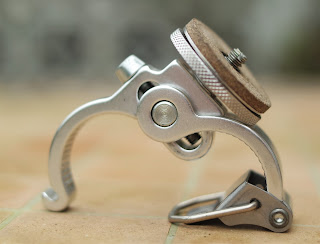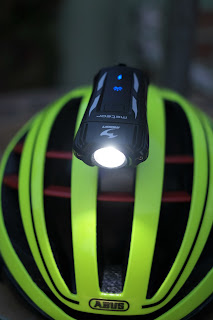Well, after several months, I’ve refitted the Soma Condor2 bars https://www.sevendaycyclist.com/soma-condor-2-shallow-drop-bars to my fixed gear winter/trainer. Now, don’t infer that I didn’t like the Genetic D-Riser 16 https://www.sevendaycyclist.com/genetic-d-riser-bars and its D-Riser4 stablemate.
I think they’re great bars for gravel and road duties. The former are also 11g lighter than the Condor2. However, I also like both Condor bars. The original Condor https://www.sevendaycyclist.com/soma is definitely the right choice form my Univega, whereas, the Condor 2 is a better fit for my fixed.
Especially with the Genetic Neuron Accessory Bar https://www.sevendaycyclist.com/genetic-neuron-accessory-bar The naturally grippy nature of the Acros Silicone Wrap Handlebar Tape https://www.sevendaycyclist.com/acros-silicone-wrap-handlebar-tape meant it could be machine-washed, then ported over.
Since we’re talking bars, let’s discuss the riser designs and their perceived/benefits.
The Gravel and adventure markets are widely credited for the introduction of dropped bars with a “riser” section.
As with the flared ends, the riser element gives some additional height, without resorting to taller head tubes, flipped stems and/or additional spacers. Now, while the adventure/gravel markets are the obvious drivers for this design, the breed may also benefit riders like me, who are of “feminine proportions” I.e. long in the leg, short in the body.
Yes, semi/compact geometry framesets and a much wider choice of stem/steerer length has greatly reduced the need for custom frames. However, top tube length can still prove proportionally too generous. A shorter stem and bar lift can solve this-without a frumpy aesthetic. 50mm wide, the Condor 2 are broad enough to entertain bigger, bike packing friendly bar bags.
I found the original condor less compatible, although I’m running the K-lite Bikepacker Ultra dynamo light https://www.sevendaycyclist.com/k-lite-bikepacker-ultra-dynamo-ligh beneath the bars. The Carradice SQR tour swallows most of my needs pretty convincingly, so a small unit, such as this bijous See Sense Handlebar Bar Bag https://www.sevendaycyclist.com/see-sense-handlebar-bag is more than adequate. I’ve also resurrected the Minoura VC100 Quick- Release Camera Mount.
Beautifully finished, the clamping system is phenomenally secure and will even hold compact video cameras.
The cork platform is another definite plus, minimising vibration both to the camera and video capture. It’ll be hosting the Apeman A80 Action Camera, although possibly when I’ve acquired a replacement waterproof housing, given the seemingly unrelenting rainfall. https://www.sevendaycyclist.com/apeman
Bike and other theft are on the rise, for a wealth of different reasons. It’s always been a serious problem but at crisis point, as police resources are diverted to tackling violent crimes. Mercy and compassion are the two basic human values that thieves lack and will seek to legitimise their behavior in every conceivable way.
Maintaining the vigilance and good locking practice at home, as you should in the street is imperative. Datatag and similar systems are useful tertiary security/deterrents, making machines harder to sell-on. The same goes for other distinctive distinguishing features.
I have been known to engrave stems, crankarms and other components with my full name and sometimes postcode/blood group type, etc. Velo Eye sent us their Bicycle Security QR Tag https://www.sevendaycyclist.com/velo-eye-bicycle-security-qr-tag
The big difference between it and other systems, including Datatag is that it’s app-based. Anyone who has a bike on the app can check to see whether a stickered machine has been reported stolen. The App allows the machine’s location to be sent, in real-time to the registered owner.
Theoretically, this improves the likelihood of successful retrieval. We’re told recovery rate stands at 75%. There’s a dealer in Montrose who deploys them on all their bikes. Only one has been stolen to date and that was quickly recovered.
Home intrusion is similarly distressing. Thieves are targeting the more affluent areas-leafy London suburbs, particularly. Easier and richer pickings being the most obvious explanations.
Thinking like a thief i.e. how would I foil my own security and making necessary improvements. Bike theft has always been small beer for the police. We’re told that police resources are stretched to the point where violent crime is their primary focus.
Burglaries, motor/cycle and other vehicle thefts are only likely to increase. Now, you’ll excuse me. After 300 filthy miles, I need to replenish the White Lightning Wet Ride and there’s a rush of people offering me “features” on knitting machines...




















